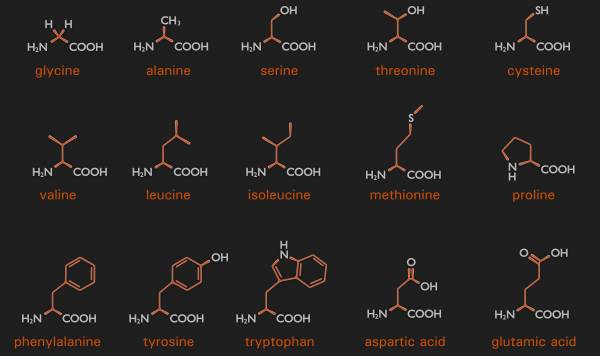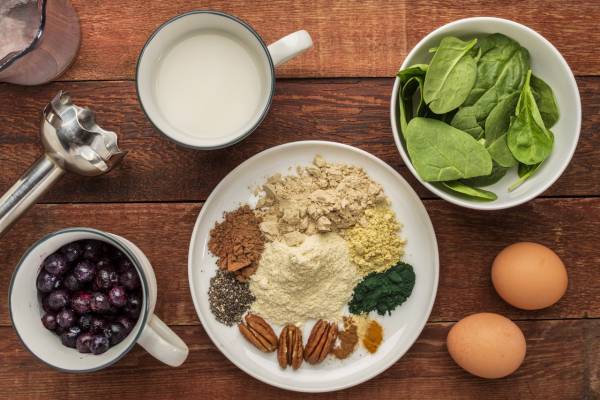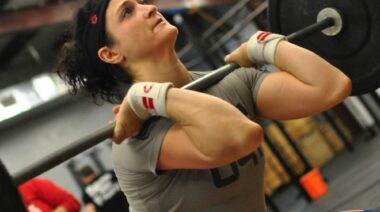Nearly all athletes and fitness enthusiasts take advantage of a convenient post-workout protein shake. There are many purposes for protein shakes, but three stand out as typical:
- They contain a few selective carbohydrates to help rebuild muscle glycogen stores.
- They contain branched-chain amino acids to help promote muscle fiber recovery.
- They contain fast-digesting proteins such as whey to help rebuild the muscle fibers and add muscle mass.
This last one is arguably the most important. This rebuilding and adding of muscle is known as muscular hypertrophy. The idea behind resistance exercise is that it breaks down muscle fibers so they can be rebuilt, often with added mass (hypertrophy). In generally accepted theory, muscular hypertrophy following intense resistance exercise leads to aesthetically pleasing and performance-enhancing gains.
Resistance exercise is the best way to maximize muscular hypertrophy, but protein shakes have been scientifically shown to enhance the process even further. A protein shake is specifically designed to help the muscles reach their full growth and recovery capabilities, but timing of consumption and a quality shake are both important factors.
Why Protein?
Resistance exercise causes the hypertrophic effect to take place in an initial spike followed by a gradual decline over the 24-48 hours following the training. There is quite a bit of variation in the period of the hypertrophic effect depending on the individual, the duration of exercise, and the intensity of exercise.
But the addition of a protein shake following a workout results in the spike of the hypertrophic effect at the time of consumption. The hypertrophic effect may also spike again at later meals. This happens because exercise depletes the muscles of amino acids causing hyperaminoacidemia. During feeding, particularly with a fast-digesting protein such as whey, the uptake of amino acids by the muscles greatly increases in order to balance the amino acid level. The increase in uptake results in hypertrophy, the healing and growing of worked muscles.
“Just as resistance exercise increases muscle fiber sensitivity to leucine, aging and sedentary lifestyles lower leucine sensitivity and make it more difficult to gain muscle mass.”
Resistance exercise raises the muscle fibers’ sensitivity to leucine, an essential amino acid, making post-workout an optimum time to consume leucine. Essential amino acids cannot be synthesized within the body and must be consumed through food, which is why they are a staple in nearly every protein shake.
Other essential amino acids may help stimulate muscular hypertrophy, but leucine has been shown to stimulate muscle protein synthesis directly. Just as resistance exercise increases muscle fiber sensitivity to leucine, aging and sedentary lifestyles lower leucine sensitivity and make it more difficult to gain muscle mass.

Essential amino acids stimulate muscular hypertrophy and muscle protein synthesis.
Leucine Sources
As with all nutrient benefits, the hypertrophic effect of leucine-rich protein has a limit per dose. This limit is said to be 20-25 grams of protein (0.25 grams protein/kilogram body mass) consumed in a post-workout protein shake by young people, regardless of activity level.
“In order to optimize the ratio of muscle loss-to-fat loss, the hypertrophic effect that leucine-rich dairy protein has on muscle mass can be very helpful and even protective.”
In older adults, the most effective amount of protein is also about 20 grams during resting periods, but rises to about 40 grams after resistance exercise, indicating that amino acids may be used later for other processes in addition to muscle protein synthesis.
But leucine is an amino acid that cannot be stored in the body for any length of time. So, regularly eating foods high in leucine (other than protein shakes) will help to keep muscle protein synthesis at an optimum level. Foods rich in leucine include meat, fish, poultry, legumes, and dairy products.
What Kind of Protein?
Another reason fitness enthusiasts utilize protein shakes is that a high-protein diet along with exercise has been shown to contribute to fat loss – as opposed to general weight loss, which would include the loss of muscle mass. A concern for those looking to improve aesthetics and/or performance is that weight loss may also lead to muscle tissue loss and a decrease in performance. In order to optimize the ratio of muscle loss-to-fat loss, the hypertrophic effect that leucine-rich dairy protein has on muscle mass can be very helpful and even protective.
There are many variations in protein shakes, including vegan and gluten-free varieties. But the most common types of protein shakes are made from dairy sources like casein and whey. Dairy-derived protein shakes are used most often because of the high leucine content.
“Whey protein contains only about 20% more leucine concentration than casein-based protein does, but casein is a slow-digesting protein and this is why its hypertrophic effect is not as large.”
Of all types of protein supplements, whey is the most leucine-rich. Whey protein contains only about 20% more leucine concentration than casein-based protein does, but casein is a slow-digesting protein and this is why its hypertrophic effect is not as large. Casein is not as useful during those prime, but short post-workout windows for hypertrophic gains.
RELATED: Best Whey Protein Powders
Vegan and soy-based proteins do not contain as much leucine, but are still useful if being dairy-free is important to you. There are also dairy-based proteins available that are gluten-free, if you have a sensitivity to gluten.
Protein shakes also come in a variety of costs and qualities. A worthwhile protein shake should contain at least 25 grams of protein per serving and no more than five grams of carbohydrates.

My Favorite Recipe
If you exercise semi-regularly but have never tried a protein shake, it could be just the boost you need to take your training to the next level. Post workout is certainly the best time to consume one, but protein shakes can be consumed at any time of day as a supplement or meal replacement.
Here is my favorite blended protein shake recipe:
- 1 scoop chocolate protein powder
- 1 tablespoon chia seeds
- 1 handful spinach
- ½ cup egg whites
- 3 coffee cubes (coffee frozen into ice cubes)
- ½ cup water
More Like This:
- Pass the Protein Shake: Digging Into Pre- and Post-Workout Nutrition
- 5 Nutrient-Packed Protein Smoothies of 5 Ingredients Each
- 10 Things I Know About Protein That You Don’t
- New on Breaking Muscle Today
References:
1. National Nutrient Database for Standard Reference. U.S. Department of Agriculture. Retrieved 2009-09-16.
2. Phillips, Stuart M. “A Brief Review of Critical Processes in Exercise-Induced Muscular Hypertrophy.” Sports Medicine (Auckland, N.z.) 44.Suppl 1 (2014): 71–77. PMC. Web. 5 May 2015.
3. Crozier SJ, Kimball SR, Emmert SW, et al. Oral leucine administration stimulates protein synthesis in rat skeletal muscle. J Nutr. 2005;135:376–382.
4. Wilkinson DJ, Hossain T, Hill DS, et al. Effects of leucine and its metabolite beta-hydroxy-beta-methylbutyrate on human skeletal muscle protein metabolism. J Physiol. 2013;591:2911–2923.
5. Phillips SM, Tipton KD, Aarsland A, et al. Mixed muscle protein synthesis and breakdown after resistance exercise in humans. Am J Physiol. 1997;273:E99–E107.
Photos courtesy of Shutterstock.






